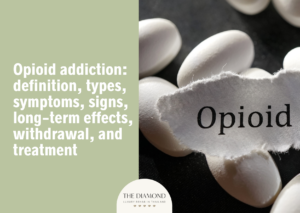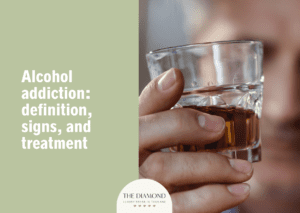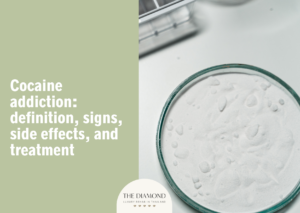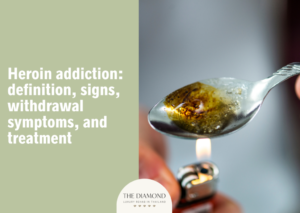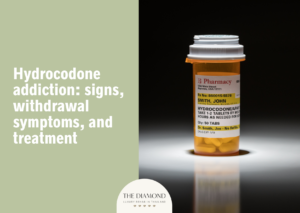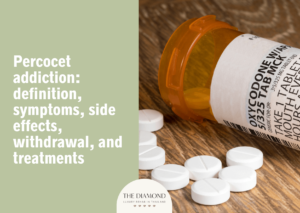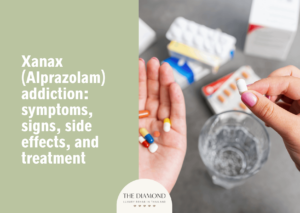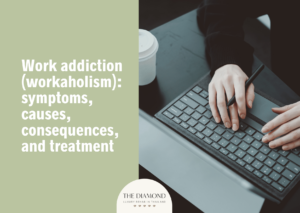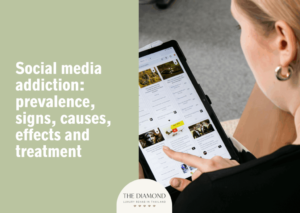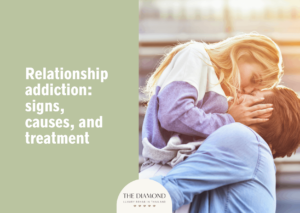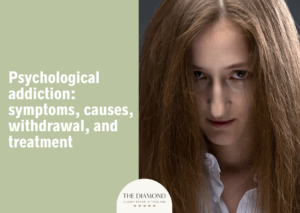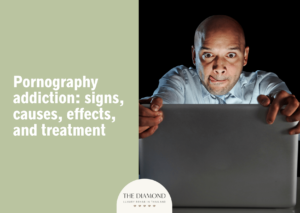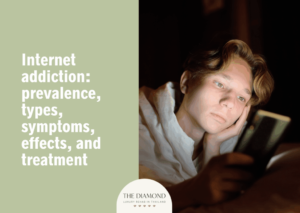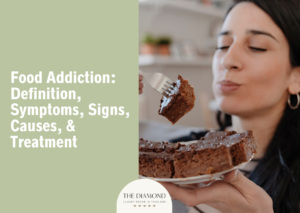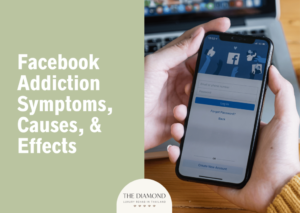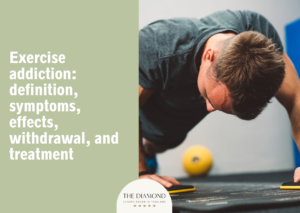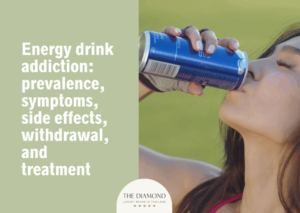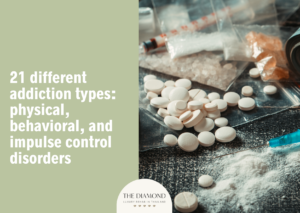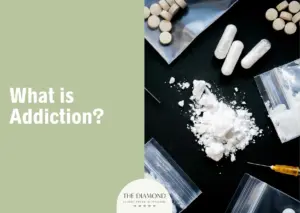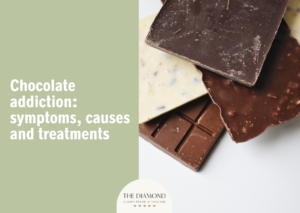Heroin addiction: definition, signs, withdrawal symptoms, and treatment

Heroin addiction is an irresistible need to take heroin despite negative effects on one’s life. A high physical and psychological demand for the substance causes major health, social, and emotional concerns.
The signs of heroin addiction include intense cravings, withdrawal symptoms, neglect of responsibilities, changes in appearance, significant unintentional weight loss, flu-like symptoms, scabbing on the skin, secretive behavior, and social withdrawal.
The most common heroin withdrawal symptoms are nausea and vomiting, sweating and chills, anxiety, runny nose, agitation, insomnia, and diarrhea.
Treatment options for heroin addiction include medication-assisted treatment (MAT), cognitive behavioral therapy (CBT), contingency management (CM), human immunodeficiency virus (HIV) harm reduction program and self-help program.
What is heroin addiction?
Heroin addiction is a chronic, relapsing disorder that is distinguished by compulsive drug seeking, persistent use despite detrimental consequences, and long-lasting changes in the brain. Individuals with this severe type of substance use disorder develop a physical and psychological dependence on heroin, an opioid that is derived from morphine.
A 2011 article by Sándor Hosztafi published in Acta Pharmaceutica Hungarica indicated that heroin is a highly addictive illegal substance. It’s the most quickly-acting opioid or the most misused one overall. The term “rush” or “high” refers to the exhilarating sensation that abusers report.
What are the signs of heroin addiction?
Signs of heroin addiction refer to the observable indicators suggesting an individual is suffering from a dependency on heroin. The signs of heroin addiction are listed below.
- Intense cravings: Individuals with heroin addiction experience powerful urges to use the drug. Cravings are often uncontrollable and drive compulsive drug-seeking behavior. Even after extended periods of abstinence, heroin-related stimuli (such as needles and surroundings) still elicit powerful craving reactions, according to a 2019 study by Kakko et al., titled “Craving in Opioid Use Disorder: From Neurobiology to Clinical Practice.”
- Withdrawal symptoms: Withdrawal symptoms reveal heroin addiction by showing the body’s reliance on the drug to function normally. Absence of heroin causes severe discomfort and instability via altering brain chemistry. Such reactions demonstrate how profoundly the addictive substance has changed the internal balance of the body. Even in the absence of continuous usage, dependence verifies the existence of addiction.
- Neglect of responsibilities: Personal responsibilities start slipping when drug use takes over a person’s focus. Commitments at home, work, or school are forgotten or ignored as substance use becomes the main concern. Neglect of responsibilities does not stem from laziness but from a change in priorities caused by dependence. Prolonged patterns of avoidance lead to harm in both relationships and daily routines.
- Changes in appearance: Physical changes such as poor hygiene and needle marks (track marks) on the arms or other injection sites are common among heroin addicts. Users additionally exhibit constricted pupils and a drowsy, “nodding off” state. According to a study by Dhingra et al., titled “Illicit drugs: Effects on eye,” published in 2019, heroin induces miosis (constricted pupils), a characteristic indicator of opioid consumption. Miosis begins in 15 minutes and lasts for at least two hours in non-dependent people. Recovery from miosis starts earlier in dependent people, suggesting the development of tolerance.
- Significant unintentional weight loss: Heroin usage leads to a noticeable and unintentional decrease in body weight due to the drug’s impact on appetite and overall health. According to a 2021 report by Mahboub et al., titled “Nutritional status and eating habits of people who use drugs and/or are undergoing treatment for recovery: a narrative review,” heroin disrupts the brain’s natural system for processing pleasure and reward. Typically, eating provides satisfaction and encourages regular nourishment. Heroin, however, hijacks similar neural pathways and delivers a more intense, rapid surge of pleasure. Consequently, the enjoyment and importance of food begin to fade.
- Flu-like symptoms: Chronic heroin users frequently experience symptoms similar to the flu, including muscle aches, sweating, runny nose, and feverish feelings, especially during withdrawal periods. The body reacts to the absence of the drug with discomfort, mimicking illness. Flu-like symptoms show the system has adapted to constant exposure and now struggles without the substance.
- Scabbing on the skin: Repeated heroin use, particularly through injection, causes persistent skin problems—including scabs and sores—due to constant scratching or infections at injection sites. Open wounds become more common as hygiene declines and immune function weakens. Persistent scabs point to continuous use and physical effects related to drug dependence.
- Secretive behavior: Individuals with heroin addiction become secretive and deceptive about drug-related activities. Sudden changes in routines, unexplained absences, or vague answers about activities raise suspicion. Attempts to avoid questions or isolate from loved ones reflect fear of judgment or consequences. Concealment becomes a way to protect the habit and avoid intervention.
- Social withdrawal: Social withdrawal often occurs when maintaining relationships feels less important than using heroin. Interactions with friends or family cause stress, guilt, or fear of confrontation. Isolation provides a space to continue harmful habits without interruption or judgment. As per a 2024 review by Belfiore et al., titled “A Multi-Level Analysis of Biological, Social, and Psychological Determinants of Substance Use Disorder and Co-Occurring Mental Health Outcomes,” adults with heroin use disorder frequently report feeling lonely, having weak family ties, and receiving little emotional support. The aforementioned factors both cause and exacerbate persistent addiction.
What are the heroin withdrawal symptoms?
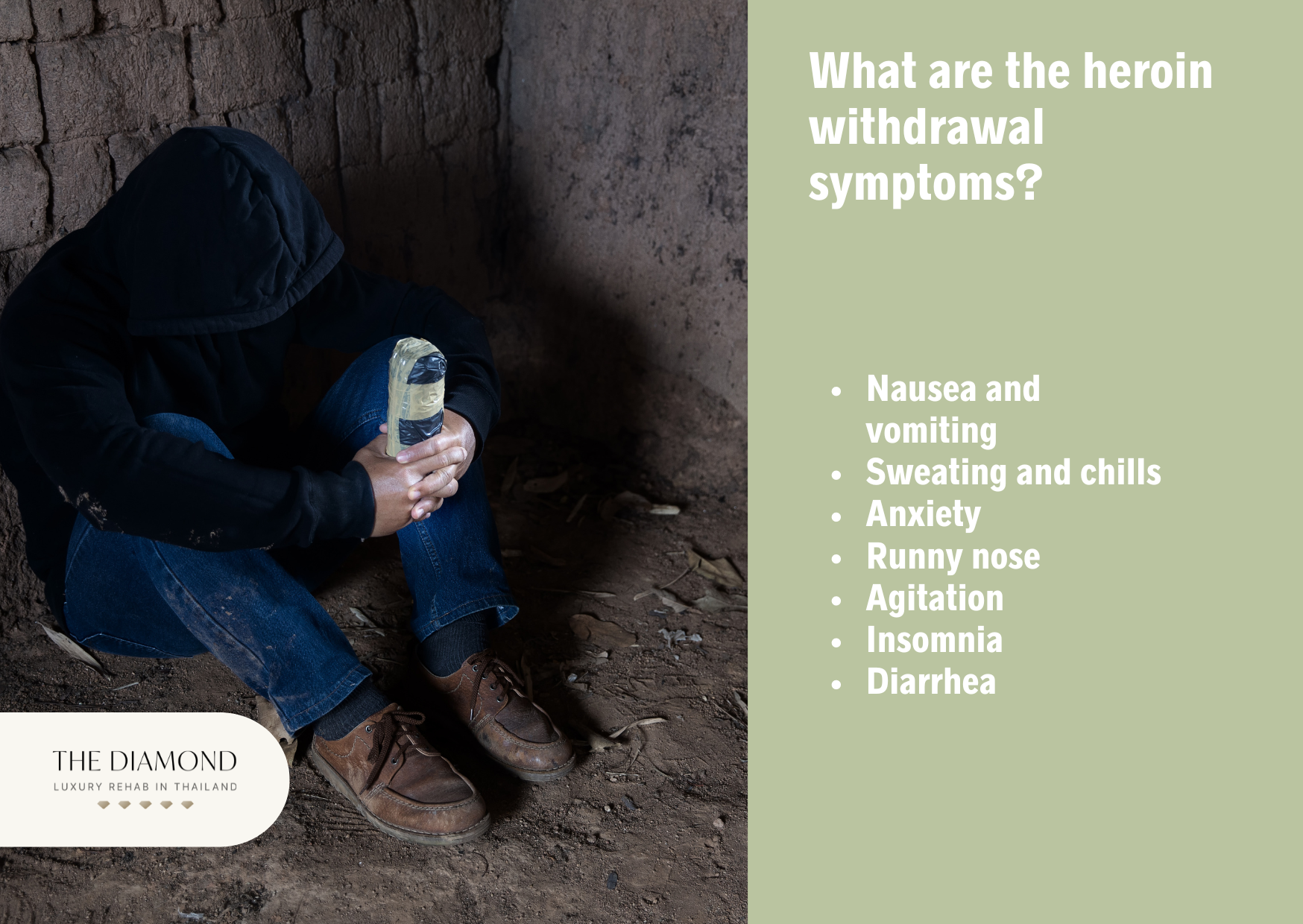
Heroin withdrawal symptoms refer to the reactions occurring when a person dependent on heroin abruptly reduces or stops using the drug. The most common heroin withdrawal symptoms are listed below.
- Nausea and vomiting: Nausea and vomiting occur during withdrawal as the body reacts to the sudden absence of heroin. The digestive system becomes unbalanced due to changes in brain chemistry caused by long-term use. Without the drug, normal regulation of bodily functions becomes disrupted. The reaction reflects the body’s attempt to flush out toxins and regain stability.
- Sweating and chills: Sweating and chills commonly appear as a result of the nervous system struggling to regulate body temperature after heroin abuse stops. The drug suppresses certain functions, and once removed, the body overcompensates in response. Sudden temperature shifts create discomfort as the system tries to rebalance.
- Anxiety: Anxiety levels tend to be extremely high during withdrawal, and individuals become easily irritated or angry. Part of the emotional distress stems from psychological dependence on the drug. According to a 2023 review article by Gary B. Kaplan and Benjamin L. Thompson, titled “Neuroplasticity of the extended amygdala in opioid withdrawal and prolonged opioid abstinence,” regular, long-term heroin use alters brain function, particularly in regions involved in stress and emotion. One key area, the central nucleus of the amygdala (CeA), acts as the brain’s alarm center by processing fear, anxiety, and emotional responses. Prolonged exposure to heroin increases sensitivity in specific neurons within the CeA. The brain begins to signal danger unnecessarily, even in safe or calm situations.
- Runny nose: A runny nose develops during drug withdrawal because heroin’s absence disrupts the autonomic nervous system. Heroin suppresses various bodily functions, including processes involved in managing fluid levels. Once use stops, the body overreacts while trying to regain control, leading to increased nasal discharge.
- Agitation: Agitation during heroin withdrawal is exacerbated by intense cravings for the drug. Individuals experience overwhelming urges to use heroin to alleviate discomfort and achieve the euphoric effects previously experienced. The inability to satisfy cravings increases frustration and exacerbates agitation.
- Insomnia: Difficulty sleeping begins after drug use stops, as the body no longer receives the sedative effects it had grown accustomed to. Without heroin, the brain struggles to enter a relaxed state. Racing thoughts, tension, and heightened alertness make restful sleep nearly impossible. The lack of deep rest further worsens fatigue and emotional instability. As per a 2022 study by Jennifer Langstengel and H Klar Yaggi, titled “Sleep Deficiency and Opioid Use Disorder Trajectory, Mechanisms, and Interventions,” heroin interferes with natural sleep patterns, diminishing both total sleep duration and quality. The substance disrupts breathing during sleep, resulting in disorders such as sleep apnea, potentially leading to fatal overdoses during sleep. Individuals with insufficient sleep are more prone to resort to opioids to manage pain, fatigue, or anxiety.
- Diarrhea: Diarrhea commonly occurs after stopping heroin because the drug slows digestive function during use. Once use ends, the gastrointestinal system becomes overstimulated and struggles to self-regulate. Muscles in the intestines contract too rapidly, leading to loose and frequent bowel movements.
What are the long-term effects of heroin addiction?
Long-term effects of heroin addiction refer to the lasting consequences caused by extended drug use. The long-term effects of heroin addiction are listed below.
- Chronic lung complications: Long-term heroin use leads to chronic respiratory issues. A 2023 editorial by Darke et al., titled “Chronic obstructive pulmonary disease in heroin users: An underappreciated issue with clinical ramifications” revealed about 40% of heroin users fit the COPD diagnostic criteria. 50% of heroin smokers have the condition. About 20% are impacted, even among injectors who do not smoke heroin. There have been reports of respiratory failure deaths in this group before the age of 40, and COPD frequently presents with an early onset and affects younger people than is usually the case for tobacco users or the general population.
- Infections of the heart: Injecting heroin increases the risk of infective endocarditis, a serious infection of the heart valves or lining. According to a 2020 study by Asher Schranz and Joshua A. Barocas, titled “Infective endocarditis in persons who use drugs: Epidemiology, current management, and emerging treatments,” the use of heroin and other injectable drugs is contributing to a significant increase in fatal heart infections. 60% of IDU-IE (Injection Drug Use–Related Infective Endocarditis) cases in places like Maine involved heroin. The tricuspid valve (right side of the heart) is most frequently impacted by IDU-IE.
- Chronic constipation: Chronic constipation develops after prolonged heroin use due to the impact of the depressant drug on the digestive system. Heroin slows down intestinal muscle movement, making waste elimination more difficult. Reduced gastrointestinal (GI) motility over time leads to frequent and persistent bowel problems. Discomfort, bloating, and potential complications such as hemorrhoids or bowel obstruction often follow.
- Abscesses and skin Infections: Injection drug use, particularly with contaminated needles or in unsterile conditions, increases the risk of developing abscesses and skin infections. Abscesses are localized collections of pus forming at injection sites, requiring medical drainage and antibiotic treatment to prevent further complications such as cellulitis or sepsis. Chronic skin infections lead to scarring and permanent damage to skin tissues.
- Sexual dysfunction in men: Heroin’s impact on the central nervous system interferes with normal sexual arousal and function, complicating intimate relationships. The prevalence of sexual dysfunction (SD) among heroin-dependent patients receiving methadone maintenance treatment (MMT) is high, as evidenced by a 2019 study by Llanes et al., titled “Sexual Dysfunction and Quality of Life in Chronic Heroin-Dependent Individuals on Methadone Maintenance Treatment”—in which 85.9% of participants experienced SD. The majority had to be asked to report the problem; only 11.8% did so voluntarily. Additionally, higher doses of methadone worsened sexual function.
- Irregular menstrual cycle in women: Heroin’s effects on hormonal balance and the hypothalamic-pituitary-gonadal axis disrupts normal menstrual function. The third chapter of a 2009 publication from the Substance Abuse and Mental Health Services Administration, titled “Substance Abuse Treatment: Addressing the Specific Needs of Women” mentioned women with a history of heroin use develop menstrual abnormalities, including amenorrhoea or an irregular menstrual cycle. After discontinuing drug use, regular menstrual periods require up to one year to return.
- Changes in brain structure and function: Prolonged heroin use alters the brain’s wiring, especially in areas linked to decision-making, memory, and emotional control. After drug use stops, the brain struggles to regain balance, leaving lasting disruptions in how signals are processed. Emotional instability, poor focus, and memory problems frequently persist long after withdrawal begins.
What are the causes of heroin addiction?
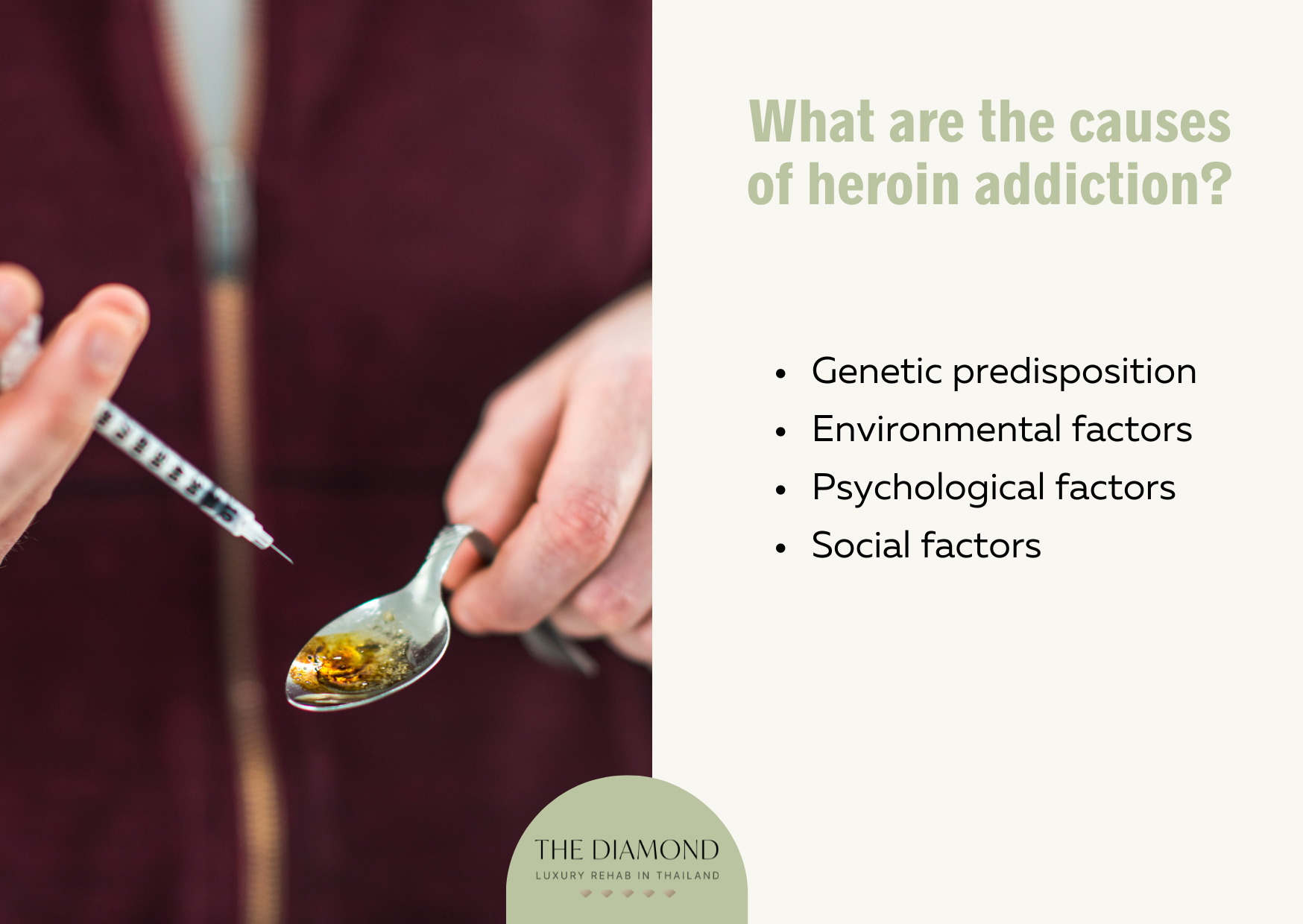
Causes of heroin addiction describe a number of elements influencing the formation of heroin dependence. The causes of heroin addiction are listed below.
- Genetic predisposition: Genetic factors play a significant role in the susceptibility to heroin addiction. Individuals with a family history of substance abuse face higher risk due to inherited traits influencing how the brain’s reward system responds to drugs. The heritability of opioid addiction is believed to be between 40% and 60%. Heroin exhibits the largest specific genetic variance (0.4), indicating distinct genetic susceptibilities, according to a 2019 paper by Wang et al., titled “Opioid Addiction, Genetic Susceptibility, and Medical Treatments: A Review.”
- Environmental factors: Environmental influences significantly contribute to heroin addiction by shaping behavior, perspective, and exposure. Growing up in a household where substance use is normalized increases the likelihood of early experimentation. High-stress environments, such as neighborhoods marked by poverty or violence, drive individuals to seek relief through drug use. Lack of access to education, employment, or supportive relationships reduces healthy coping options.
- Mental health disorder: Mental health disorders such as depression, anxiety, and post-traumatic stress disorder (PTSD) lead individuals to use heroin as a way to self-medicate. A 2013 review article by Whitesell et al., titled “Familial, Social, and Individual Factors Contributing toRisk for Adolescent Substance Use” revealed how posttraumatic stress disorder (PTSD) is linked to a higher probability of developing a substance use disorder, namely with marijuana or hard drugs such as heroin. The heightened risk stems from traumatic experiences linked to PTSD, as extreme stress prompts individuals with the condition to manage overwhelming emotions through substance abuse.
- Social influences: Peer pressure and social dynamics heavily influence the initiation and continuation of heroin use. Individuals, especially adolescents and young adults, use heroin to fit in with a group or gain acceptance. Social isolation, lack of support systems, and unstable relationships further drive people to seek solace in heroin use, perpetuating the cycle of addiction.
How long does it take to get addicted to heroin?
The time it takes to become addicted to heroin varies widely among individuals due to several factors, including genetic predisposition, frequency and method of use, and personal psychological and social circumstances. Generally, heroin is highly addictive, and physical dependence develops rapidly, at times within just a few uses.
Heroin users seek out repeated doses to replicate the tremendous euphoria they experience due to the drug’s quick increase of dopamine levels in the brain’s reward system. Tolerance develops when users need increasingly larger doses to get the same effect, which speeds up the process of addiction.
Overall, while certain people develop an addiction within a few weeks, others take longer, but the highly addictive nature of heroin makes the risk of addiction very high for anyone who uses the drug.
Why is heroin addictive?
Heroin is addictive because it has a powerful impact on the brain’s reward system, producing strong emotions of pleasure and calm. As a depressant, the drug lowers activity in the central nervous system, rapidly producing a calming effect frequently thought to be satisfying.
Dopamine saturating opioid receptors in the brain increases the desire to keep using the substance. Over time, the brain adapts to overstimulation by reducing the natural production of feel-good chemicals. As a result, users begin to crave heroin just to feel normal rather than to achieve a high.
The traditional view proposed heroin’s effects primarily result from conversion to other chemicals like 6-monoacetylmorphine (6-MAM) and morphine. However, according to a 2023 study by Milella et al., titled “Heroin and its metabolites: relevance to heroin use disorder,” recent research indicates heroin, in its original form, produces direct psychoactive effects, particularly linked to the intense “rush” or “flash” felt almost immediately after injection. Following intravenous use, heroin reaches peak concentration in the brain within 30 seconds, preceding substantial formation of 6-MAM.
What are the risk factors for heroin addiction?
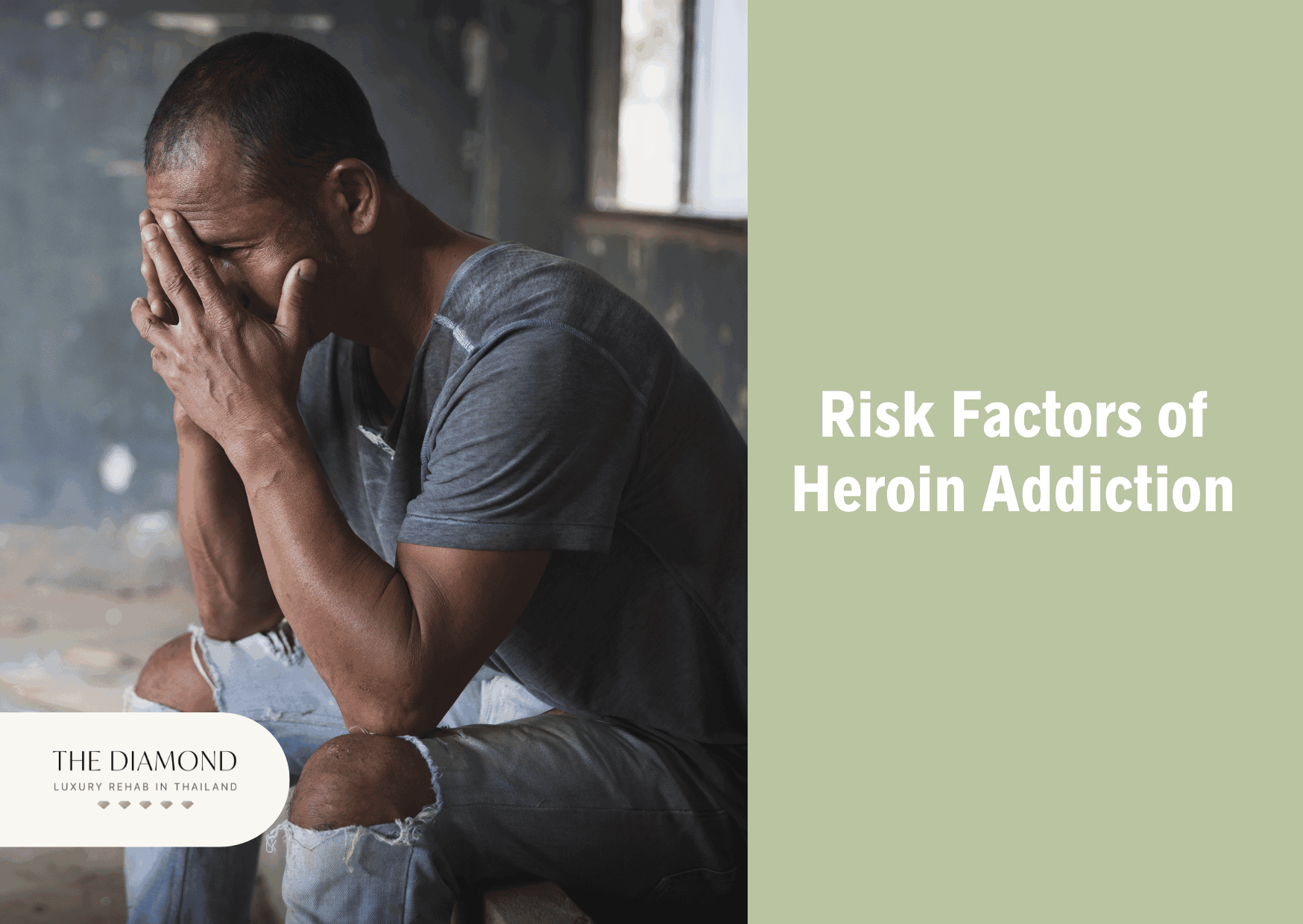
Risk factors for heroin addiction refer to the various elements and conditions increasing the likelihood of an individual developing a dependence on heroin. The risk factors for heroin addiction are listed below.
- Limited family involvement: A lack of family involvement leaves individuals without consistent guidance or emotional support, creating feelings of neglect. In the absence of strong family connections, a person is likely to turn to heroin as a way to cope with distress or fill the emotional void. Families failing to monitor or communicate effectively with loved ones reduce protective oversight, increasing vulnerability to risky behavior.
- Trauma and stress: Experiencing trauma, such as physical or sexual abuse, or chronic stress from situations like domestic violence or severe financial difficulties, increase vulnerability to heroin addiction. Heroin use begins as an attempt to numb emotional pain or cope with overwhelming stress. The powerful effects of heroin on the brain’s reward and stress circuits make the substance an appealing, albeit destructive, coping strategy.
- Accessibility and availability: Easy access to heroin significantly raises the risk of addiction. Easy access to low-cost heroin increases the likelihood of experimentation among individuals. High availability, combined with social acceptance in certain groups, lower the perceived risks and increase use.
- Prescription opioid misuse: Various heroin users first develop addiction to prescription opioids, due to strong chemical similarities. In a 2016 paper by Harocopos et al., titled “Circumstances and contexts of heroin initiation following non-medical opioid analgesic use in New York City,” all 31 participants admitted to misuse of opioid analgesics (OA) prior to using heroin, demonstrating a consistent pattern wherein non-medical OA usage was the first step toward opioid dependence. Withdrawal, cost and potency issues drove the shift, aided by social factors such as the dismantling of the stigma associated with heroin and peer pressure.
- Early drug use: Initiating drug use at a young age increases the likelihood of developing heroin addiction later in life. Early exposure interferes with normal brain development and forms lasting substance use habits. Adolescents face increased risk because developing brains respond strongly to peer pressure and external influences.
- Socioeconomic factors: Socioeconomic challenges often make individuals more vulnerable to drug use. An article by Gerra et al., titled “Socioeconomic Status, Parental Education, School Connectedness and Individual Socio-Cultural Resources in Vulnerability for Drug Use among Students” published in February 2020 revealed school truancy, or skipping school, is the biggest behavioral predictor of heroin use, while parental education is the primary social predictor of regular heroin use among adolescents.
What are the treatments for heroin addiction?
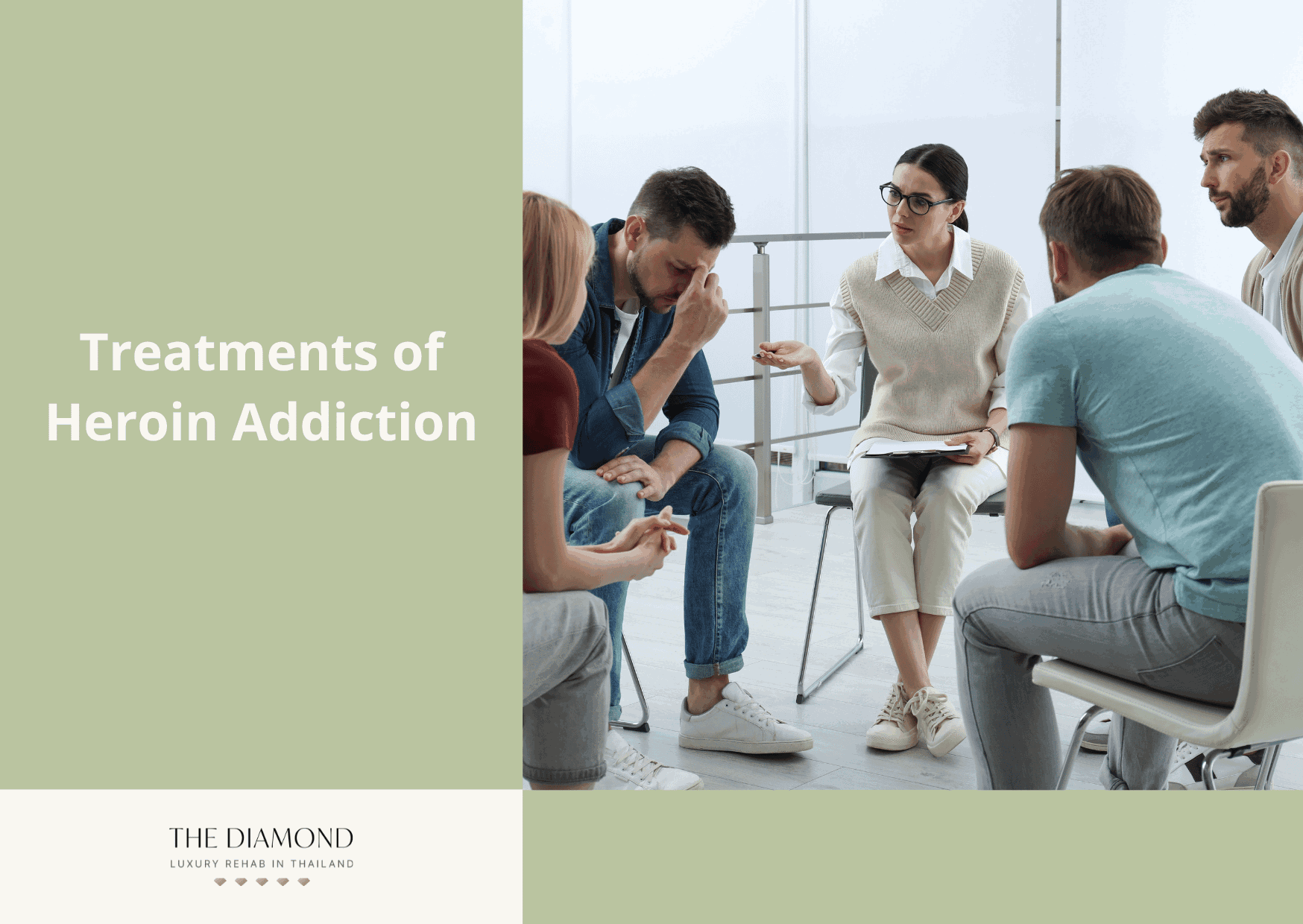
Treatments for heroin addiction are interventions aimed at helping people overcome heroin dependence and attain long-term recovery. The treatments for heroin addiction are listed below.
- Medication-assisted treatment (MAT): Medication-assisted treatment (MAT) for heroin addiction involves the use of medications such as methadone, buprenorphine, and naltrexone to reduce cravings and withdrawal symptoms. According to a 2021 report titled “What are the treatments for heroin use disorder?” from the National Institute on Drug Abuse explained oral methadone enters the brain slowly, reducing the “high” linked to faster delivery methods and easing withdrawal symptoms. Buprenorphine reduces cravings without triggering euphoria or dangerous side effects linked to opioid use. Naltrexone, an opioid antagonist, blocks heroin’s impact and lowers the desire to consume the drug.
- Cognitive behavioral therapy (CBT): Individuals struggling with heroin usage find relief through CBT, a form of psychotherapy. As a way to better manage stress and cravings, patients learn to recognize what sets off symptoms and how to effectively cope with triggers. Complementing CBT with other therapy modalities is frequently part of full treatment.
- Contingency management (CM): Using positive reinforcement to encourage sobriety and adherence to treatment, CM helps patients battling heroin addiction. In exchange for achieving predetermined objectives, such as attending therapy sessions or submitting drug-free urine samples, patients are rewarded with vouchers or minor financial incentives. According to the first chapter of a 2024 publication titled “Contingency Management for the Treatment of Substance Use Disorders: Enhancing Access, Quality, and Program Integrity for an Evidence-Based Intervention” from the Office of the Assistant Secretary for Planning and Evaluation (ASPE), CM serves as a potent adjunct to medications for opioid use disorder (MOUD). An analysis of 60 clinical trials done over more than thirty years revealed that for individuals receiving MOUD, CM was more effective than standard care in promoting adherence to MOUD and achieving abstinence from opioids and polysubstance use at the conclusion of treatment.
- Human immunodeficiency virus (HIV) harm reduction program: Harm reduction programs focus on minimizing the health risks linked to drug use rather than enforcing immediate abstinence. As per a 2021 study by López et al., titled “A review of research-supported group treatments for drug use disorders,” group-based HIV harm reduction programs were proven successful in lowering illicit opioid usage, especially among injection drug users. There was a correlation between the program’s inclusion of HIV prevention, needle exchange and safe injection practices and a drop in both illicit opioid usage and HIV transmission rates. Increased usage of sterile equipment and decreased injection frequency were two specific results.
- Self-help programs: Self-help programs emphasize personal responsibility and peer support as a pathway to overcoming heroin use disorder. Opioid use disorder (OUD) patients are urged to enroll in self-help groups like Narcotics Anonymous, according to a continuing education activity by Dydyk et al., titled “Opioid Use Disorder: Evaluation and Management” last updated in January 2024. Participants are able to change thought patterns and comprehend how opioids affect day-to-day living through a combination of education, peer-based coaching and motivational support.
How effective is rehabilitation in heroin addiction?
Rehabilitation for heroin addiction is highly effective, especially when a holistic strategy incorporating medical, psychological, and social support is implemented in the program.
According to a 2021 study by Fairley et al., titled “Cost-effectiveness of Treatments for Opioid Use Disorder,” increased availability of medication-assisted treatment (MAT) using buprenorphine, methadone, or injectable extended-release naltrexone, along with overdose education and naloxone distribution (OEND), and contingency management (CM), resulted in cost-effective decreases in illness and death caused by opioid use disorders such as heroin addiction.
Drug addiction treatment calls for detoxification, counseling, behavioral therapy, and medication-assisted therapies. Drug rehab programs establish a secure setting where patients have ongoing medical oversight and emotional assistance.
The chances of long-term recovery improve significantly when treatment plans are customized based on individual needs. Although chances of relapse still exist, regular use of aftercare services reinforces progress. Rehabilitation benefits include enhanced possibilities of returning to the workforce, better mental clarity, emotional stability, and mended relationships.
What are the heroin recovery statistics?
The heroin recovery statistics indicate that in 2023, of the 30.5 million adults aged 18 or older who acknowledged experiencing a substance use problem, 73.1 percent (equivalent to 22.2 million individuals) identified as being in recovery or having recovered from their drug or alcohol use problem—a category encompassing heroin, according to a 2024 publication from the Substance Abuse and Mental Health Services Administration (SAMHSA), titled “Key Substance Use and Mental Health Indicators in the United States: Results from the 2023 National Survey on Drug Use and Health.”
Individuals aged 26 or older who recognized having experienced a substance use issue were more inclined than their younger counterparts aged 18 to 25 to identify as being in recovery or having recovered from their substance use problem.
Who are the celebrities who overcame heroin addiction?
Who are the celebrities who overcame heroin addiction?
Celebrities who overcame heroin addiction pertain to well-known public figures who struggled with and successfully recovered from heroin dependency. The celebrities who overcome heroin addiction are listed below.
- Robert Downey Jr.: Throughout the 1990s, Robert Downey Jr., a renowned actor best known for his roles in Iron Man and Sherlock Holmes, struggled with severe drug addiction involving heroin. Major setbacks in professional progress resulted from the addiction, leading to several arrests and multiple stints in rehabilitation. After a final arrest in 2001 and completion of a court-ordered rehab program, Downey made a firm decision to pursue sobriety. After a full recuperation, RDJ made a triumphant comeback to the film industry, ultimately getting recognition as one of the highest-paid actors in Hollywood.
- Russell Brand: Russell Brand struggled with heavy heroin use during his early career, experiencing arrests, health scares and strained relationships. His turning point occurred when his management team issued an ultimatum, forcing him into treatment. Through abstinence-based recovery, meditation and ongoing involvement in support programs, he maintained long-term sobriety. Brand then became a proponent of addiction awareness, utilizing his platform to motivate others.
- Angelina Jolie: Angelina Jolie experimented with heroin in her youth, during a period marked by emotional turmoil and self-destructive behavior. Her decision to stop using drugs was influenced by her increasing fame in movies as well as the demands of parenting. She withdrew herself from toxic situations and emphasized family and job as stabilizing forces.
- Demi Lovato: Singer and actress Demi Lovato has publicly shared her struggles with addiction, including heroin use. A major turning point in Lovato’s journey toward recovery occurred in 2018 following a near-fatal overdose. Admission to a rehabilitation facility took place shortly after the incident. Since finishing treatment, the singer-actress has remained sober.
- Steven Tyler: For many years, lead singer Steven Tyler of Aerosmith battled heroin addiction, often causing strife among the band and interfered with Tyler’s performances and general health. Public awareness surrounded the addiction issues, but professional help was eventually sought by the singer in the mid-1980s. Overcoming the reliance was greatly aided by the support of close companions and Tyler’s determination.
- Drew Barrymore: Actress Drew Barrymore faced addiction at a young age, beginning with alcohol and marijuana before moving on to harder substances like cocaine and heroin. At age 14, two stints in rehab had already taken place, and efforts to revive a once-promising career were underway. Support from family and a renewed focus on acting paved the way toward Barrymore’s sobriety. Continued success followed her in multiple roles—actress, producer, and writer.
- Eric Clapton: During the 1970s, legendary musician Eric Clapton faced a difficult period marked by heroin addiction and instability in both personal and professional life. His promising career almost ended due to the intensity of the addiction, but friends and fellow artists helped the singer enroll in a rehabilitation program. After completing treatment, a major comeback followed. Several of Clapton’s most acclaimed musical works emerged in the years following recovery.


